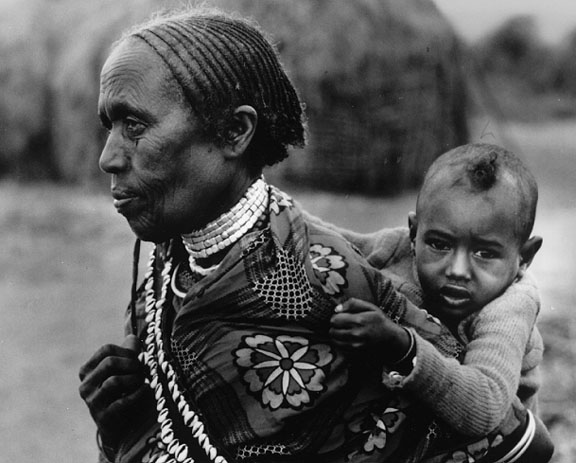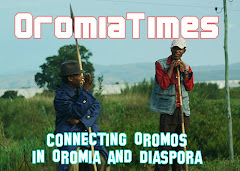Xan Rice in Nairobi
Sunday December 10, 2006
The Observer
The fighting centred around Maddoy, 25 miles south of Baidoa, the temporary capital and the only town that the weak transitional federal government controls. Witnesses who reported heavy shelling said Ethiopian troops formed part of the government contingent.
While information remains sketchy - due to the dangers in Somalia even local correspondents for the international news agencies are reporting on the clashes from Mogadishu, 150 miles to the east - both sides suffered casualties, perhaps more than two dozen.
The fighting appear to be the fiercest yet between militiamen allied to the Somali Council of Islamic Courts (SCIC), which controls most of south-central Somalia, and Ethiopian-backed government troops. The SCIC has been steadily approaching Baidoa in recent weeks and has taken most of the surrounding towns and villages.
Salad Ali Jelle, the government's Deputy Defence Minister, told Reuters yesterday that 'war could start any minute because we are so close to each other'.
Many analysts and diplomats in Nairobi see a full-scale conflict in the coming weeks and months as inevitable. Though peace talks are scheduled to resume in Khartoum on Friday, a government spokesman said that they were 'a waste of time' and both sides have continued preparing for war.
With Ethiopia firmly backing the government - it has sent at least 6,000 troops into the country, analysts believe - and Eritrea taking the side of the Courts, the looming conflict could plunge the entire region into turmoil.
The latest clashes came two days after a controversial United Nations security council resolution authorising the deployment of African troops to protect the government. President Abdullahi Yusuf's regime remains fragile and fractured, and has been unable to win over the Somali population since its formation two years ago. Its position has been made increasingly tenuous by the rise in power of the Courts, which took control of the capital, Mogadishu, last June, ending 15 years of rule by warlords and bringing law and order.
Though they were set up to dispense justice and carry out social programmes, the Courts soon proved a strong political force. The SCIC contains moderate clerics seeking a stable Islamic state as well as hardliners whose goal is to reunite a 'greater Somalia' that includes parts of Kenya and Ethiopia.
The SCIC are also protecting terror suspects with links to al-Qaeda, although the number and provenance of the jihadists is unknown. For the US, however, their presence is a sign that the Courts are a threat to world peace that must be contained. Washington helped the Mogadishu warlords in their failed struggle against the SCIC earlier this year, a strategy that unwittingly helped the SCIC. In Somalia the warlords and the concept of foreign intervention arouse similar loathing.
The US strategy has attracted similar controversy. Despite warnings from analysts that the deployment of foreign peacekeepers would be viewed as taking sides and could trigger a war, America pushed strongly for last Wednesday's security council resolution. European Union countries, which are sceptical about whether deployment is wise, or even feasible, demanded that the peacekeeping force exclude front line states such as Ethiopia.
Even so the reaction from the Courts was immediate. Condemning the resolution, the SCIC vowed to fight any foreign troops and to remove the Ethiopians by force. While troops from Ethiopia have the clear advantage militarily - the Courts do not have an air force or tanks - analysts say any conflict is likely to be protracted because the Islamist militias will adopt guerrilla tactics.www.observer.guardian.co.uk



No comments:
Post a Comment